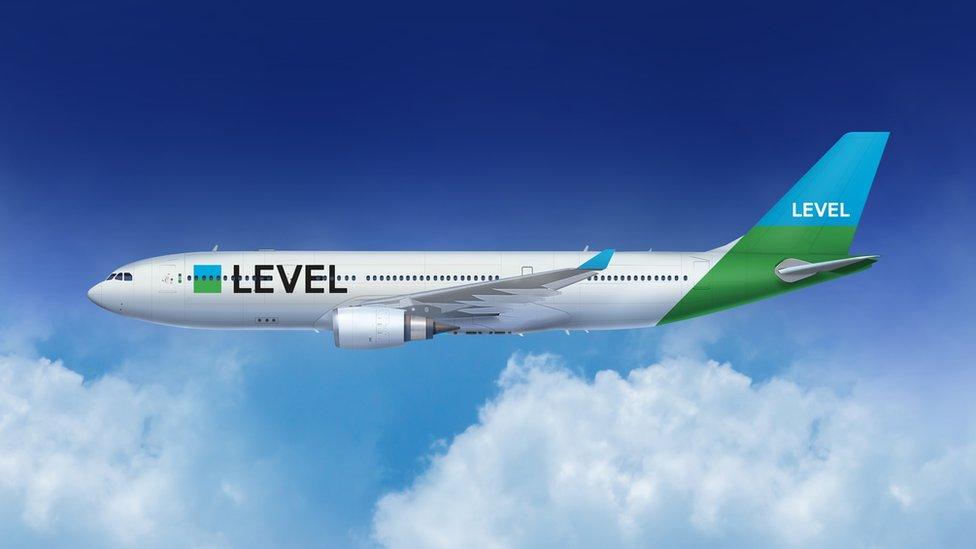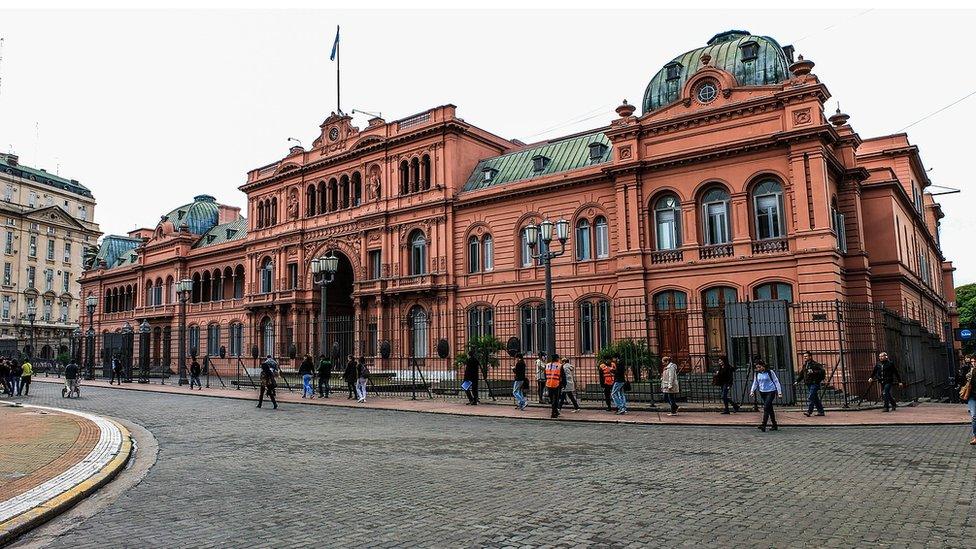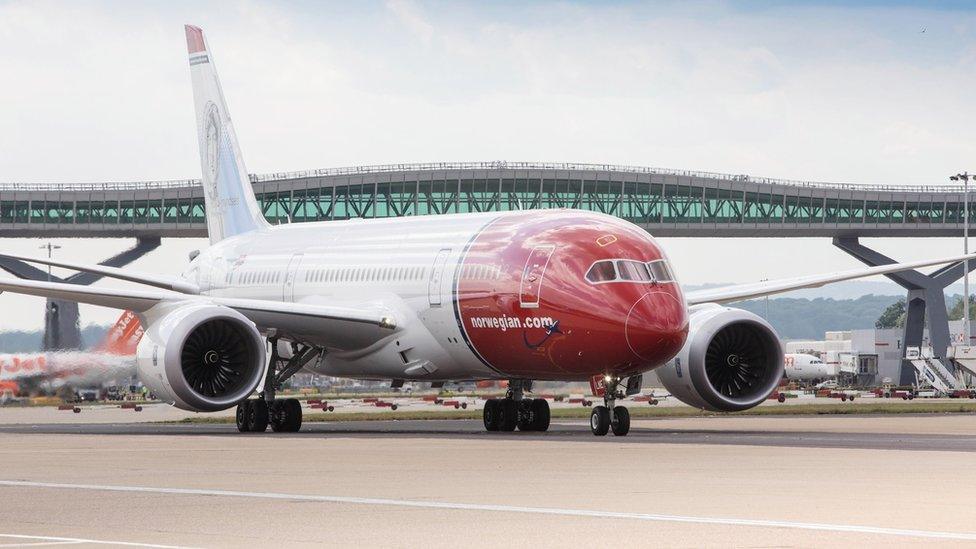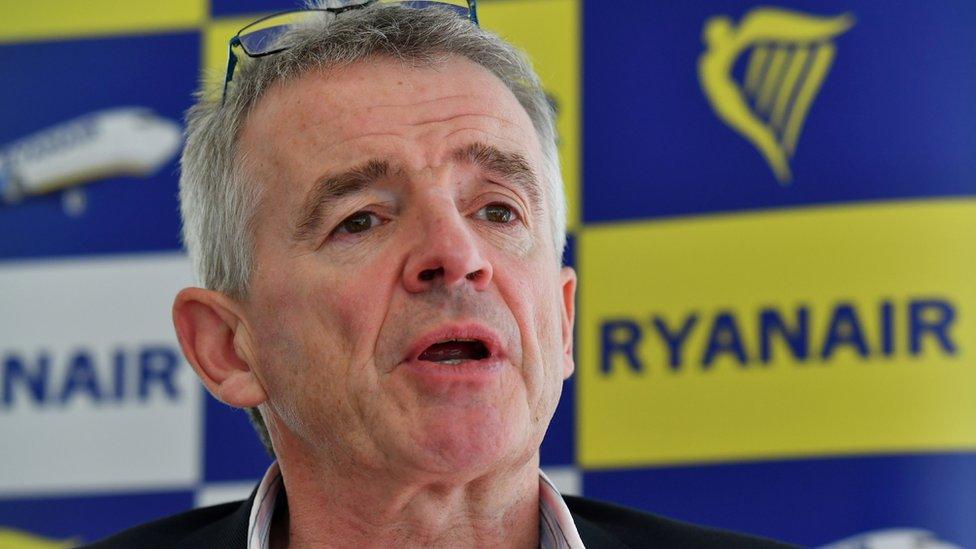Can long-haul air travel also be low cost?
- Published

Budget airlines have transformed air travel over the past two decades, making a flight almost as cheap as a coach journey for hundreds of millions of travellers. But can the same ever be true for longer journeys as well?
Our love affair with budget airlines continues unabated. Ryanair, the Irish carrier that passengers have long loved to hate, last year overtook Lufthansa to become Europe's biggest airline by passenger numbers.
Norwegian carried about a quarter of Ryanair's 117 million passengers in the same period. But unlike its competitors, the Oslo-based airline has found considerable success by flying across the Atlantic from cities including London and Paris for the past four years - and appears to have the likes of IAG worried.
The decision by IAG, which owns British Airways, Iberia and Aer Lingus, to launch a low-cost long-haul airline is regarded as a direct response to the threat posed by Norwegian. A "reactionary tit-for-tat move" is how one analyst describes the move.
The Barcelona-based carrier will initially offer flights to four destinations including Los Angeles and Buenos Aires at "even more affordable" prices from June. IAG says it sold 52,000 tickets in the 24 hours after Level's website went live last week.

The presidential palace, the Casa Rosada, in Buenos Aires - one of the destinations Level will fly to
The arrival of budget operators on long-haul routes is good news for consumers as they are proving "very stiff competition for traditional airlines", says a spokesperson for Abta.
But the travel agents' body points out that passengers may be less willing to put up with a cramped cabin for flights that take many hours - as well as paying extra for food and checked baggage.
All airlines must impose air passenger duty of £75 each way, which Abta says is one reason the arrival of Level will not trigger a price war. In addition, it will start with just two planes, but as Gerald Khoo, an airlines analyst at Liberum, notes: "Two aircraft will not be the sum total of IAG's ambitions."
'Asleep at the wheel'
Level plans to add more routes with more planes from summer 2018 and is "talking to other potential European airports where Level may operate". Khoo expects the UK to be on its wish list, with Manchester a possible first port of call.
The advantage of using a new brand such as Level not only allows IAG to keep costs as low as possible, but also means a break with the past.
Khoo argues that BA passengers have certain expectations of what the service levels should be, which may no longer be realistic. Norwegian does not suffer from the same problem and seems to be exceeding expectations given its customer satisfaction ratings, he adds.
But another analyst who covers IAG says the company "may have left its run too late - it's been asleep at the wheel for too long".

Norwegian calls the Boeing 787 Dreamliner a "gamechanger"
Norwegian started offering the UK's first low-cost long-haul flights to the US from Gatwick in July 2014 and has become the third biggest airline at the Sussex airport. It now flies to seven US destinations from Gatwick, with twice-daily departures to New York and a daily flight to Los Angeles.
Stuart Buss, a spokesperson for Norwegian, says it had long wanted to fly across the Atlantic but could not make the numbers add up until the arrival of Boeing's 787 Dreamliner in late 2011. The plane is largely made of composite materials, making it far lighter and thus much more fuel efficient.
Norwegian was one of the first to order the plane and among the first airlines to start flying it. The company has 13 Dreamliners in service, with another 30 on order. "It's been the backbone of our long-haul growth," Buss says.
The airline will also start flying from Barcelona to the US in June, around the same time that it begins services from Edinburgh, Belfast, Cork, Shannon and Dublin using Boeing single-aisle 737 aircraft.
This year Norwegian starts taking delivery of the 737 Max, the latest version of the plane. Buss says its improved fuel efficiency will make it "another gamechanger". The airline has 100 of the planes on order, underlining the scale of its ambition.
Seasonal swings
While putting bums on seats to the US in the summer months at prices as low as £135 each way should not be too difficult, Norwegian may find it more challenging to fill planes from regional cities in the autumn or winter, says one airlines analyst.
And despite Michael O'Leary's oft-repeated claims, the analyst doubts Ryanair will ever launch trans-Atlantic services. "It's just not economic - Ryanair could fly from Shannon to Boston now using 737-800 planes, but they can only do one return journey a day, compared with four or five turns on European routes."

Michael O'Leary has suggested Ryanair could offer flights to the US
That obstacle does not appear to be deterring other airlines from echoing IAG's plans. Lufthansa's budget offshoot, Eurowings, flies to countries such as Cuba and Thailand from Germany.
Meanwhile, Air France will start long-haul services on its Boost subsidiary next year with the aim of "opening new routes, re-opening routes closed due to their lack of profitability and maintaining routes under threat".
Next year BA plans to squeeze another 36 economy seats into its Boeing 777 planes that fly from Gatwick to holiday destinations in Florida and the Caribbean, bringing the total to 252. It has also started to charge for food on short-haul flights, further blurring the lines between traditional and budget airlines.
When it comes to flying, it seems we very much get what we pay for.
- Published17 March 2017
